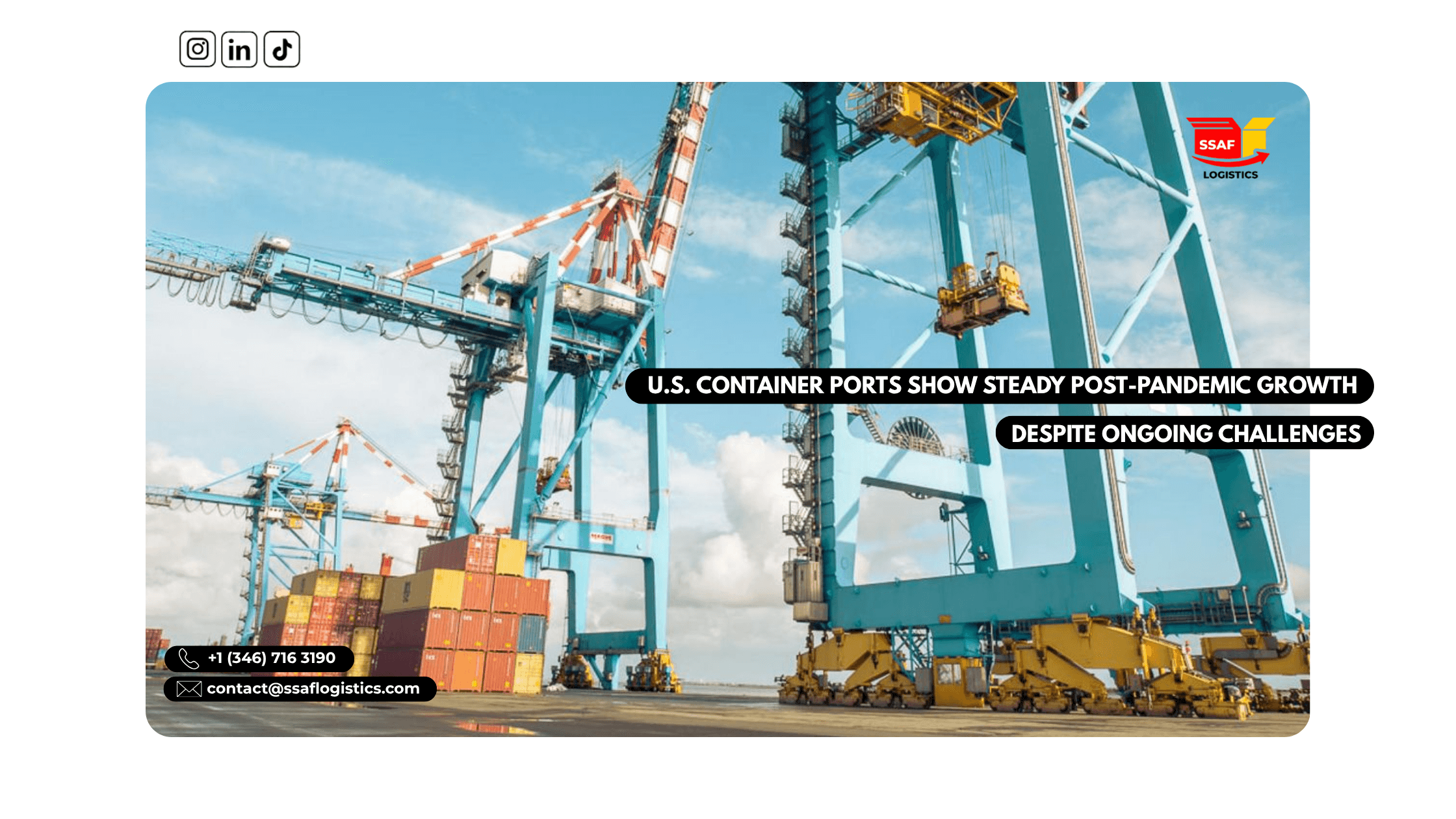General • 27 Oct, 2025 • 4 min read
U.S. Container Ports Show Steady Post-Pandemic Growth Despite Ongoing Challenges

By Andrea Davila
Container ports across the United States are showing strong signs of recovery from the pandemic, even as they face ongoing economic challenges, according to August data from the Pacific Merchant Shipping Association (PMSA).
West Coast Ports Maintain Strong Recovery Amid Mixed Year-Over-Year Results
The West Coast’s Port of Los Angeles–Long Beach complex, the nation’s leading container gateway, remains a central focus of the PMSA report. In August, Los Angeles handled 504,514 inbound loaded TEUs, down 1% from the same month last year but up 15.3% from August 2019, reflecting a solid rebound from pre-pandemic levels. Long Beach saw a similar trend, processing 440,318 inbound TEUs, a 3.6% year-over-year decline but a 36.4% increase compared to August 2019.
Combined, the San Pedro Bay ports managed 944,832 inbound loads, a modest 2.2% dip from last year. Despite short-term fluctuations, total container traffic year-to-date rose 19.9% over 2019, highlighting the ports’ resilience and strong consumer-driven demand.
At California’s Port of Oakland, 82,245 inbound loaded TEUs were processed in August—a 1.2% decrease year over year and 6.9% below 2019 levels showing how global supply chain disruptions continue to affect individual ports differently.
Mixed Fortunes for North American Ports Amid Global Trade Shifts
Further north, the Northwest Seaport Alliance (Tacoma and Seattle) experienced steeper declines, handling 93,003 laden TEUs, down 24.8% year over year and 17.2% below August 2019. These drops reflect global shipping challenges, including weaker demand and shifting trade routes as carriers seek to avoid U.S. port fees on Chinese-built vessels.
On the East Coast, the Port of New York–New Jersey posted impressive gains with 416,009 inbound TEUs, up 5.2% from last year and 21.4% higher than August 2019, underscoring its strategic importance and flexibility in managing rising volumes.
The Port of Virginia handled 140,055 inbound TEUs, marking an 8.3% annual decline, but still 15.2% above pre-pandemic levels, signaling evolving regional trade dynamics.
In the Gulf region, Port Houston recorded 169,631 inbound TEUs, a 3.9% year-over-year increase and a remarkable 53.8% surge compared to six years ago evidence of strong infrastructure investments and efficient logistics operations.
Industry-wide, fluctuating freight rates and geopolitical tensions continue to influence shipping patterns and costs globally. Disruptions in the Red Sea, in particular, have forced ocean carriers to reroute and adjust schedules, affecting prices and delivery times.
On the Atlantic Coast, the Port of Charleston saw inbound volumes rise 11.7% year over year to 110,697 TEUs, though outbound activity showed only marginal gains.
North of the border, Canada’s Port of Vancouver handled 151,273 laden TEUs in August up 2.8% year over year and 3.7% above 2019 with total container throughput for the first eight months of 2024 up 11% from 2019. Meanwhile, the Port of Prince Rupert managed 43,833 inbound TEUs, up 23.1% from last year but 38.7% below July 2019 levels, bringing its year-to-date total to 605,815 TEUs, 22.6% lower than 2019.
Related Blog Posts

![[object Object]](/_next/image?url=https%3A%2F%2Fcdn.sanity.io%2Fimages%2Fj6rggeis%2Fproduction%2Fc5eaf351458f601374f36a76babcf97671039946-2240x1260.jpg&w=3840&q=75)
![[object Object]](/_next/image?url=https%3A%2F%2Fcdn.sanity.io%2Fimages%2Fj6rggeis%2Fproduction%2F4c39242caa92e4993607eaa9fa49d823a56e1b92-2240x1260.png&w=3840&q=75)
![[object Object]](/_next/image?url=https%3A%2F%2Fcdn.sanity.io%2Fimages%2Fj6rggeis%2Fproduction%2Ff1c9bde958c98d8bb732d3dd8e9057f705a5c9bf-1080x584.jpg&w=3840&q=75)
![[object Object]](/_next/image?url=https%3A%2F%2Fcdn.sanity.io%2Fimages%2Fj6rggeis%2Fproduction%2F909ee590bb57629727faf849825db70e7a71a450-1080x584.jpg&w=3840&q=75)